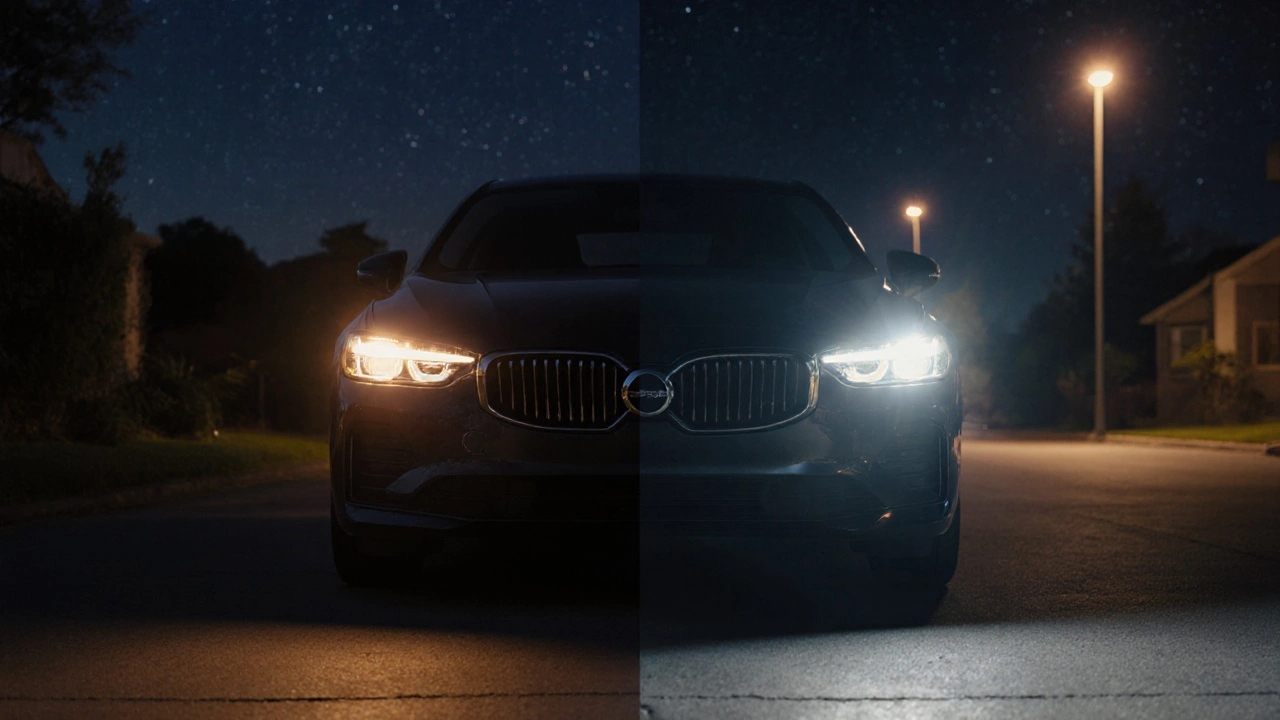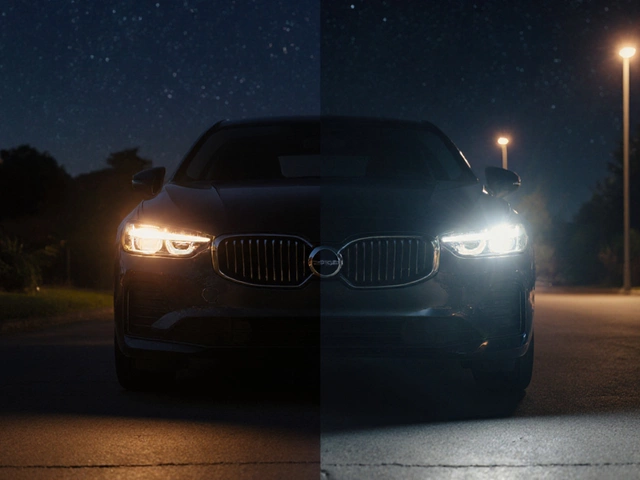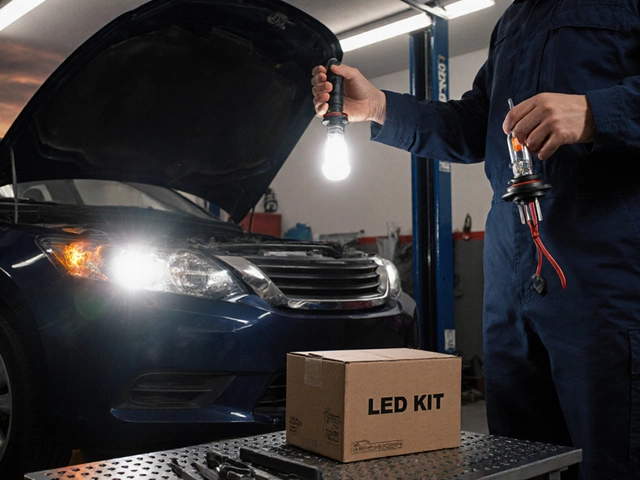LED Headlight Compliance Checker
Enter your headlight details and click "Check Compliance Status" to see if your conversion is legal under Australian standards.
Compliance Criteria
- 1 Photometric limits must be met (≤1,200 lumens for most vehicles)
- 2 Color temperature must be between 4,300K and 6,000K
- 3 Beam pattern must remain within OEM specifications
- 4 Must carry ADR-compliant certification label
When you swap out your car’s halogen headlight is a traditional incandescent light source used in vehicle front lighting for an LED headlight is a modern lighting unit that uses light‑emitting diodes to produce brighter, more efficient illumination, you instantly wonder: is this legal? The short answer is that it can be legal, but only if you follow a handful of rules laid out in Australian vehicle lighting standards.
Why the Law Looks at Headlights
Headlights do more than just make night driving easier - they affect every road user’s safety. That’s why the Australian Design Rules (ADR) are a set of national safety standards that all vehicles sold or modified in Australia must meet. The ADR specifically addresses photometric performance, colour, beam pattern and glare. If a headlight fails any of those tests, it’s considered non‑compliant and can’t be used on public roads.
Key Documents You Need to Know
The two main references for headlight legality are the Vehicle Standards Bulletin (VSB) 14/98 is a guideline that explains how to demonstrate compliance with ADR 79/01 for lighting and the National Transport Commission (NTC) which oversees the development of vehicle standards and publishes updates to the ADR. Both documents spell out the exact test methods for measuring light output, cut‑off angle and colour temperature.
When an LED Conversion Passes the Test
- It uses a Light Emitting Diode (LED) is a semiconductor that emits light when an electric current passes through it unit that meets the same photometric limits as the original halogen unit.
- The LED assembly fits inside the existing headlight housing is a the sealed body that contains the light source, reflectors and lenses without altering the shape of the beam pattern.
- It carries a compliance label or certification from an accredited testing laboratory confirming it meets photometric compliance is a the measurement of light intensity, distribution and colour as required by ADR 79/01.
If all three points are satisfied, the LED headlight is legal to use on any Australian road.
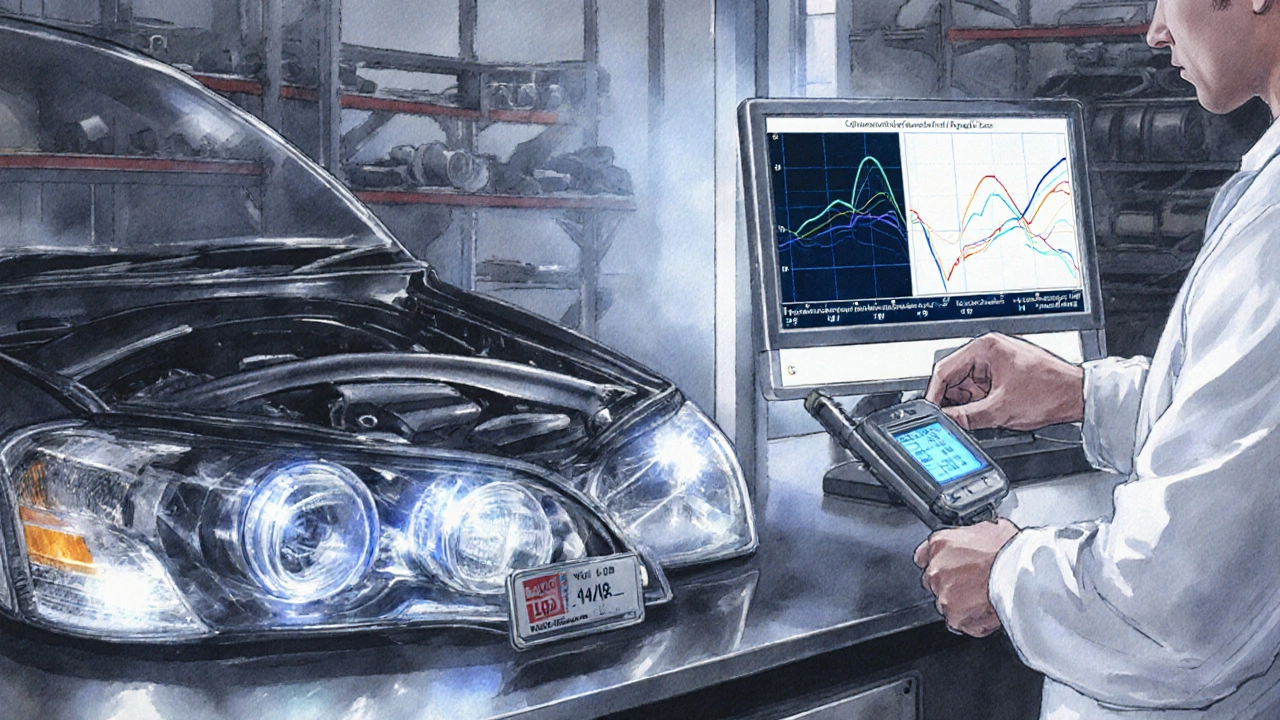
Common Pitfalls That Make LED Conversions Illegal
Many DIY kits skip the compliance step. That means the new LEDs might be brighter than allowed, or they could produce a scattered beam that blinds on‑coming drivers. Here are the typical red flags:
- Excessive Lumen Output: If the LED produces more than 1,200 lumens per headlamp (the limit for most passenger cars), it violates ADR 79/01.
- Wrong Colour Temperature: The law permits a colour temperature between 4,300 K and 6,000 K for low‑beam units. Anything outside that range is deemed non‑standard.
- Improper Beam Pattern: Changing the reflector or lens can alter the cut‑off line, causing glare. The beam must stay within the prescribed horizontal and vertical limits defined in the VSB.
- No Certification: Without a compliance label from an accredited testing house, the modification is assumed illegal, even if the specs look correct on paper.
State road authorities, such as VicRoads is a the road and traffic agency for Victoria that enforces vehicle compliance, routinely inspect vehicles during registration renewals. If they spot an uncertified LED set‑up, they can issue a defect notice and require you to revert to the original halogen units.
How to Make a Legal LED Conversion
- Choose a certified LED headlight kit. Look for wording like “ADR compliant” or “VSB 14/98 approved” on the packaging.
- Verify the kit includes a compliance label with the testing laboratory’s name, test number and date of issue.
- Install the LED units exactly as instructed. Ensure the housing is not modified - the reflector and lens must stay intact.
- After installation, have the vehicle inspected at an authorized inspection station. They will confirm the beam pattern and colour meet legal standards.
- Update your vehicle registration is a the official record showing a vehicle complies with all road‑worthy requirements paperwork if required. Some states ask for a copy of the compliance certificate.
Following these steps keeps you on the right side of the law and avoids costly fines.
Cost vs. Benefit: Is It Worth It?
Legal LED kits tend to cost between $300 and $600 per pair, compared with $100‑$150 for generic aftermarket LED modules that lack certification. The extra expense buys you a guarantee that the lights won’t be flagged during a roadworthy inspection, and you also gain the fuel‑saving and longevity benefits of LEDs - typically 30,000 hours of operation versus 1,000‑hour lifespans for halogens.
For most drivers, the peace of mind and improved visibility outweigh the price difference. If you’re a performance‑oriented enthusiast who loves every edge, you’ll likely appreciate the sharper, whiter beam that many certified LED kits provide.
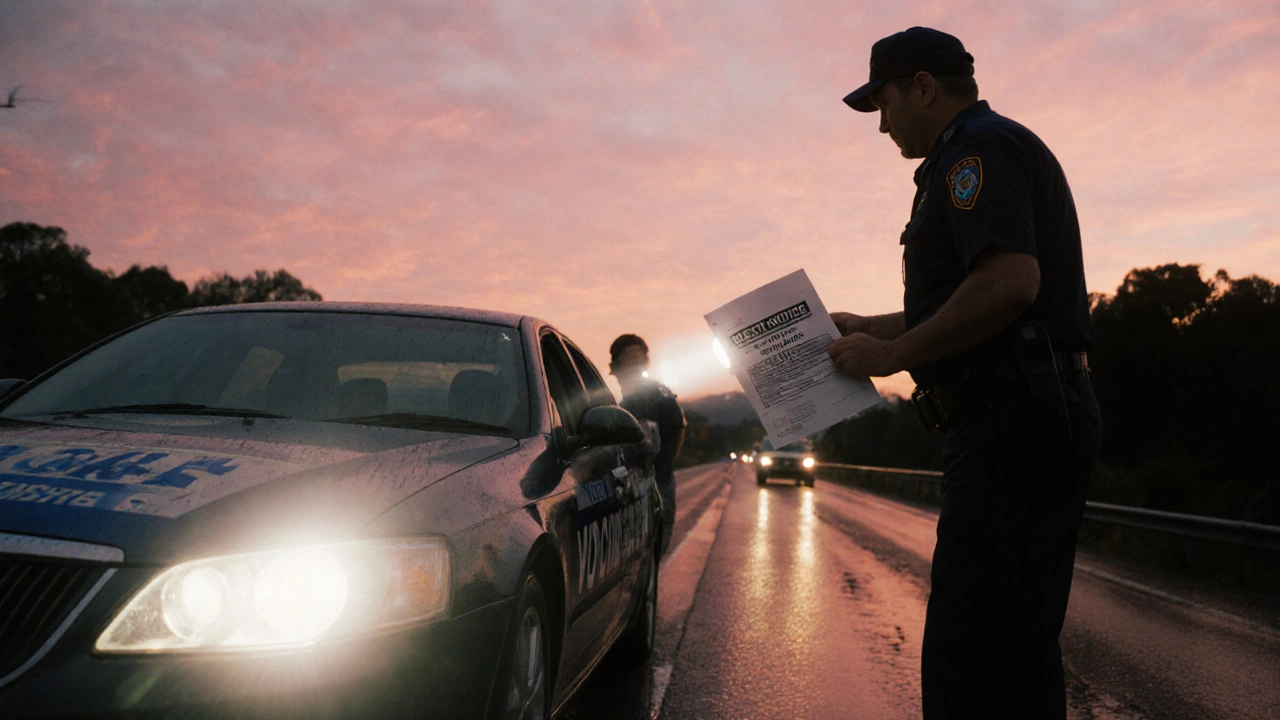
What Happens If You’re Caught Using Illegal LEDs?
State road authorities can issue a defect notice, which usually comes with a fine of $300‑$500. You’ll be required to replace the LEDs with compliant units - either the original halogens or a certified LED kit - within a set timeframe (often 14 days). Failing to correct the issue can lead to further penalties, including suspension of registration.
Beyond fines, an illegal headlight conversion can affect your insurance. In the event of an accident, the insurer may argue that the non‑compliant lights contributed to the incident and could reduce or deny payout.
Quick Takeaways
- Legal LED conversions must meet ADR 79/01 photometric limits.
- Choose kits that carry a VSB‑approved compliance label.
- Never modify the headlight housing or reflector.
- Keep documentation handy for registration renewals.
- Non‑compliant LEDs can lead to fines, forced re‑installation and insurance complications.
With the right kit and a bit of due diligence, you can enjoy brighter, more efficient lighting without breaking the law. The key is to treat the conversion like any other vehicle modification - verify compliance, keep records, and let a qualified inspector give the final sign‑off.
| Aspect | Halogen (stock) | LED (certified) | LED (non‑certified) |
|---|---|---|---|
| Photometric compliance | Meets ADR by default | Meets ADR (tested) | Often exceeds limits |
| Colour temperature | ~3,000‑3,500K | 4,300‑6,000K | Variable, may be out of range |
| Beam pattern integrity | OEM certified | OEM housing retained | Modified reflectors common |
| Legal status | Always legal | Legal when label present | Illegal on public roads |
| Typical cost (AU$) | Included in vehicle | 300‑600 per pair | 100‑250 per pair |
Frequently Asked Questions
Can I install LED headlights myself?
Yes, but only if the kit is ADR‑compliant and includes a certification label. After installation, you should still have a qualified inspector verify the beam pattern.
Do I need to inform VicRoads after I change the lights?
If the LED kit is certified, no extra paperwork is required beyond the usual registration renewal. Keep the compliance certificate in the vehicle in case an officer asks to see it.
What is the colour temperature limit for legal headlights?
The ADR allows low‑beam colour temperatures between 4,300K and 6,000K. Anything hotter (bluer) or cooler (more orange) can be deemed non‑compliant.
Will using illegal LEDs affect my insurance?
Potentially, yes. If an insurer finds the vehicle non‑compliant at the time of a claim, they may reduce the payout or deny it altogether.
How can I check if my LED headlights are ADR‑approved?
Look for a compliance label that cites VSB 14/98, includes a test number, the name of an accredited laboratory, and the date of issue. You can also ask the retailer for proof of certification.

